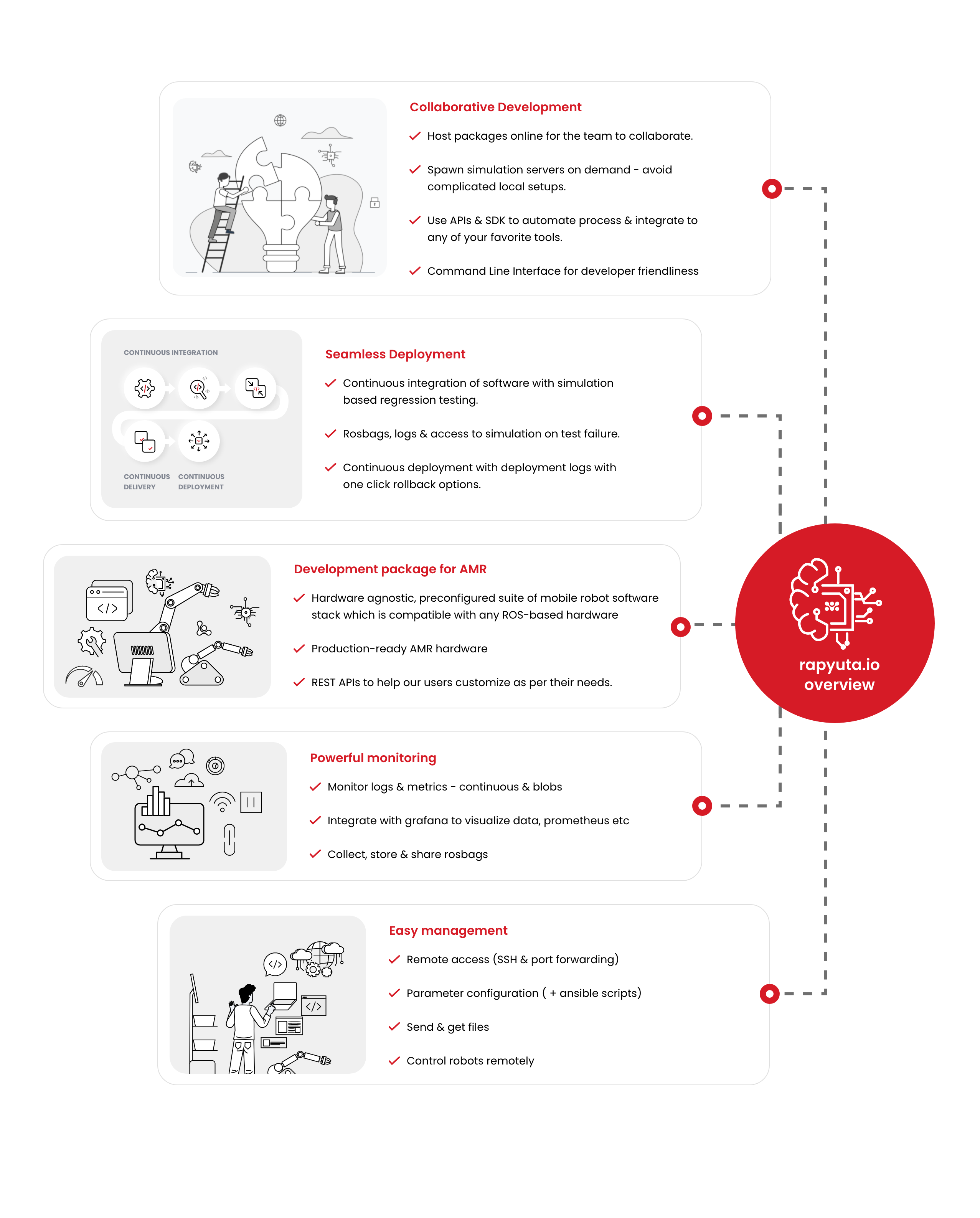In this article
Help us make these docs great!
All rapyuta.io docs are open source. See something that's wrong or unclear? Submit a pull request.
Make a contributionIntroduction
What is rapyuta.io
rapyuta.io is a collection of tools and managed services that helps solve challenges of building, provisioning, operating, and iterating on distributed robotic applications.
It enables developers to develop robot-enabled solutions that can be more complex, encompass a variety of robots, scale further and operate in multiple geographic locations.
rapyuta.io Overview
